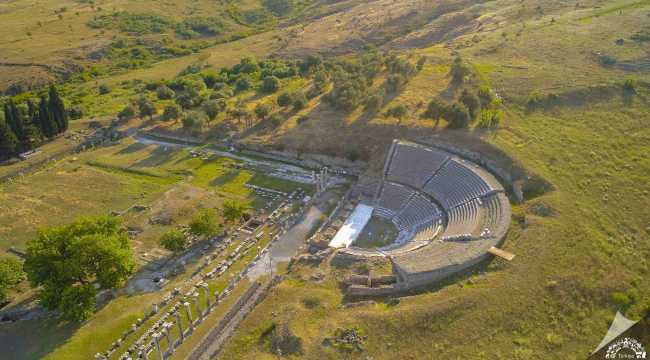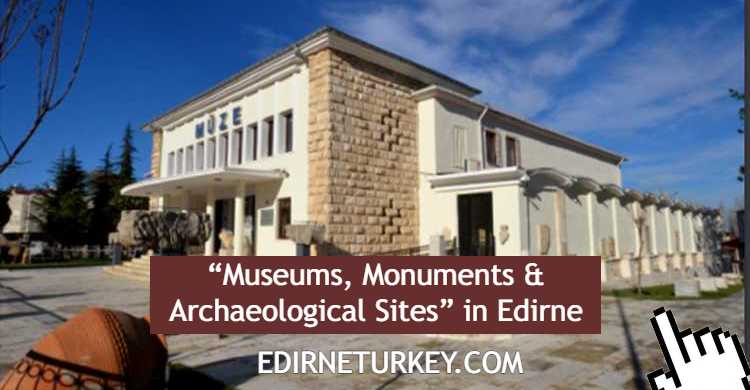Bergama, an ancient city near Izmir, with three thousand year history

Bergama (Pergamon), an ancient city that has witnessed many milestones, has been a focal point for religions, cultures, and science throughout its three-thousand-year history. The city is known to have seen the first application of natural treatments using music, theater, sports, sun, water, and mud, for instance. It also hosted one of the first seven Christian Churches mentioned in the Bible.
History: The name “Pergamon” has Anatolian origins, meaning “fortress.” The region has been inhabited since the Neolithic Age, as evidenced by settlements in the surrounding areas. According to legends, the region was settled by Telephos, the son of Herakles and a migrant after the Trojan War. Bergama first came under Lydia and later Persian rule. In 285 BC, Philetarios established the Kingdom of Pergamon. The kingdom reached its peak during the reign of Eumenes II in 190 BC, expanding to its widest borders. In 133 BC, the kingdom was bequeathed to Rome by Attalus III. The city came under Byzantine control in AD 300 and later, in 1320, fell under Turkish rule.
Today, Bergama continues to attract tourists with its Acropolis, Asklepion, and other ancient artifacts, while also offering healing properties through its natural features.

Asklepion: The Asklepion, serving as the health center at the entrance of Bergama, maintained its significance until the Christian era. Numerous people found health in the health dormitories dedicated to the God of Health, Asklepios. Besides its religious aspects, the Asklepions also functioned as schools where research and experiments in the field of medicine took place. The Pergamon Asklepion, established around the 4th century BC where the sacred water dedicated to the God of Health was found, flourished during the Hellenistic period and reached its peak during the Roman era.
Every day, hundreds of patients at Asklepion, who were healed through various methods, would visit the Asklepion Temple and make donations according to their abilities. Emperor Caracalla fell ill and was brought to the Bergama Asklepion, where he found healing and, in gratitude, donated to the city and rebuilt the Temple of Dionysus.
The sacred road from the Viran Gate leads to the Propylon, a small square in front of it, and to the east, there is a library, while to the west stands the Zeus Asklepios Temple in a Monopteros plan.

Bergama Museum: The Bergama Museum, established in the archaeology warehouse of the German excavation house between 1910 and 1913, is one of the first depot museums of the young Turkish Republic. The museum building has been recently restored, and the presentation of the artifacts has been organized. Most of the exhibited pieces in the museum come from excavations in the Acropolis, Asklepion, Basilica, Gryneion (New Şakran), Pitane, and Kestel.
Bergama Houses: At the beginning of the road leading to the Acropolis, Bergama houses with beautiful and well-maintained architecture create an interesting area for exploration. The narrow streets, coupled with the ongoing daily life, provide opportunities for visual arts enthusiasts such as photography, painting, and filmmaking due to their compositional richness.
These houses, mostly one or two stories high, built of cut and rubble stones, reflect the culture and characteristic features of Ottoman-Turkish structures. The neighborhood also features dead-end streets, wide eaved Ottoman-style tiled roofs, facades with inscribed decorations, and intriguingly designed door knockers, creating a theatrical, film studio-like atmosphere with their colorful facades.

Basilica: One of the must-see structures in Bergama is the Basilica, also known as the “Red Courtyard” (Kızıl Avlu). Built during the Roman Imperial period, it was a temple dedicated to the Egyptian gods Serapis, Isis, and Osiris, representing a unique structure related to their cult. With walls reaching 25 meters in height, the structure, made of red bricks, earned its name “Red Courtyard” and is considered one of Anatolia’s largest religious and monumental buildings.
Acropolis: Situated on the hill with the most commanding view in Bergama, the Acropolis has been under excavation since 1878. The most significant structure in the Acropolis, currently housed in the Pergamon Museum in Berlin, is the Altar of Zeus.
On the western slope, there is the ancient world’s only portable theater with a capacity of 10,000 people. The Acropolis theater, known as the “World’s Steepest Theater,” was constructed with a wooden stage to avoid obstructing the road leading to the Dionysus Temple and not to hinder the view of the temple.
Souvenirs: In Bergama’s bazaar and various shops selling tourist souvenirs like copperware, tiles, carpets, and bags used as decorative plant pots, the distinctive Bergama Carpets stand out.





